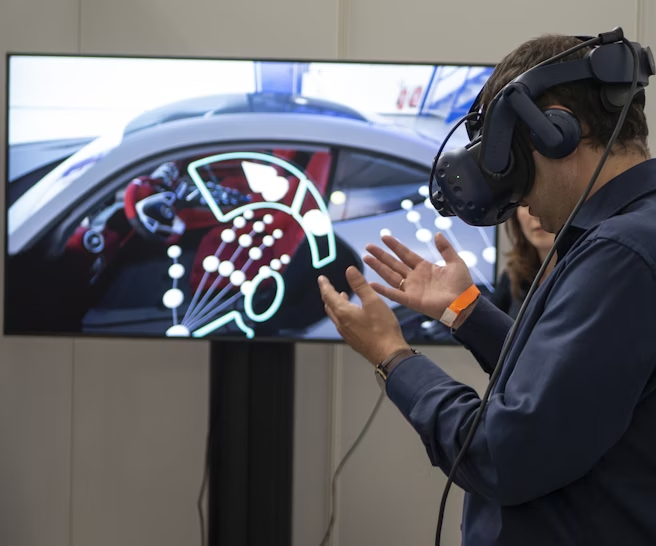1
XR-based interface design
The lab explores the design and development of XR interfaces that facilitate seamless and intuitive interactions between humans and machines. This involves creating immersive and interactive XR environments, employing gesture recognition, haptic feedback, and other novel input methods to enhance the usability and user experience in human-machine interactions.
2
Modeling and simulation of interaction scenarios
The ERIS Lab utilizes modeling and simulation techniques to analyze and understand human-machine interaction scenarios. By creating virtual simulations, they can evaluate and optimize the performance, safety, and ergonomics of these interactions. This allows for the identification of potential issues and the development of guidelines to improve the overall efficiency and effectiveness of human-machine systems.
3
User-centric framework development
The lab focuses on developing human-centered frameworks that prioritize user needs, preferences, and safety in human-machine interactions. This involves considering factors such as cognitive workload, trust, communication, and collaboration between humans and machines. The frameworks provide guidelines and recommendations for designing and implementing systems that promote effective and harmonious human-machine interaction
4
Context-specific research areas
The ERIS Lab delves into specific application areas such as drone-human interaction and construction worker-safety device interaction. They conduct research to understand the unique challenges, requirements, and opportunities in these contexts, aiming to optimize human-machine interfaces, increase safety, and enhance overall performance in these specific domains.

